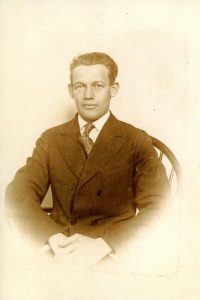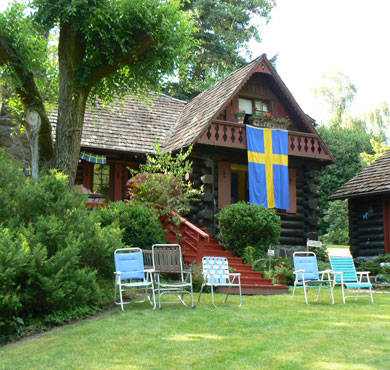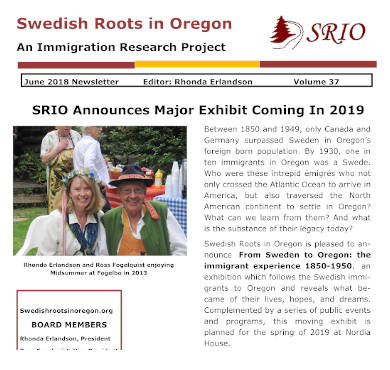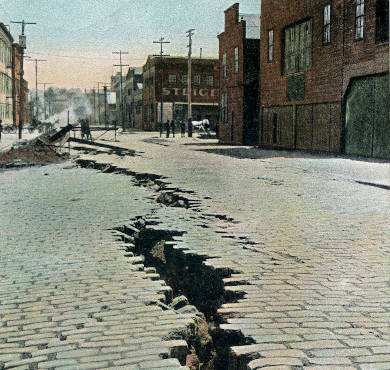By Nancy Benson
More than 1.2 million Swedes immigrated to America between 1850 and 1930 driven by threatening economic conditions. One of those millions, LEONARD SJÖBERG, came because he grew up in the squalor of a poor slipper maker’s family that moved yearly to new parishes; faced a mother dying of stomach cancer; and court ordered placements of him with multiple families. Some people would give in to these kinds of demoralizing oppressions but not Leonard.

There was a part of Leonard that believed his circumstances could change IF he worked hard enough to change them. He found his way to America in 1907, just a young man of 17, and changed his surname to an Americanized Seaberg. He landed in New York and with the helpful instruction of a fellow Swede he found lodgings in Brooklyn with six other Swedes. Though it is doubtful he apprenticed at a profession in Sweden, he found work at a glass factory in Brooklyn, and he employed the same tenacity that brought him to America. He worked at perfecting glass cutting – a skill that took him to other glass houses in Maryland, Massachusetts, and Indiana. He was called into the Army for WWI, but because he was found to be a pacifist, he would be assigned to a Bakery Unit and sent to France. These units produced hundreds of thousands of bread loaves for the men while in difficult surroundings.
After the war he returned to a glass house in Indiana where he met and married a widow with a small daughter. Leonard then took his ready-made new family to Chicago and employment at a company that dealt in high end cut glass and marble. And though they loved Chicago, the Great Depression eventually hit them and threw Leonard out on the streets and bread lines. Serendipity brought Leonard to Oregon. His boss had long talked of having a piece of land on the coast of Oregon. Leonard offered to build a house on the property if he would allow him to move in with his small family. The boss would then have a place to visit for fishing and hunting. The boss agreed, furnished some of the building materials, and off Leonard went to the West. All the family’s possessions were piled upon a 4-wheel trailer and towed behind the family Studebaker. The Seabergs found the site of their prospective home about 6 miles off the main coast highway and about halfway up an 8,000 ft. mountain, amidst a heavily timbered mountainside. Here were the tall pine and Douglas fir that stretched so far into the sky that to walk in the forest, the sky would be all but blotted out.

While the ranch house was being built the family took lodging in an isolated farmhouse also perched up a mountainside. The house was on a very steep sloping mountainside with just enough level area for a house and small garden. Leonard, with no employment possible in the nearby tiny town of Hauser, decided to raise turkeys. And knowing nothing about raising turkeys, his was a comedic learning curve.
One night while her parents were away, daughter Anne (now a teenager) found her house on fire and though she managed to salvage many family possessions, the house burned to the ground. As the house was being rebuilt Leonard took a stroll down to where some Gyppo logging operations were going on (“gyppo” i.e., two-bit poor proprietary loggers). The loggers had a big boom rigged (tall as a telephone pole) and angled up from the ground into the sky with a fixed but revolving base, cable attached. This boom was used to load the big Douglas fir logs onto a nearby logging truck. One such log was being swung over head when the boom broke and the log came crashing down on Leonard, killing him instantly. This happened only a few months before his daughter Anne was to be married. She married an Oregon hometown boy (Applegate, Coos Bay, North Bend, and college in Eugene).

World War II took Anne and her new flight instructor husband and daughter to Pendleton, LaGrande and other parts of Oregon. Leonard’s legacy for Anne and descendants will always be a love of Oregon and maybe some of that same tenacity in each of them.
Editor’s note: Nancy Benson is the step-granddaughter of Leonard Seaberg whose story joins SRIO’s permanent collection of oral histories found under this website’s Stories tab.





